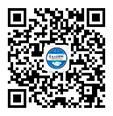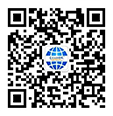| [1] |
|
| [2] |
Aleksandra Zielińska, Nowak I. Abundance of active ingredients in sea-buckthorn oil[J]. Lipids in Health and Disease,2017,16(1):95−106. doi: 10.1186/s12944-017-0469-7
|
| [3] |
Marta Solà Marsiach, Cuenca A P. The impact of sea buckthorn oil fatty acids on human health[J]. Lipids in Health and Disease,2019,18(1):145−156. doi: 10.1186/s12944-019-1065-9
|
| [4] |
柳梅, 任璇, 姚玉军, 等. 沙棘叶多酚提取物抗氧化及体外降血糖活性研究[J]. 天然产物研究与开发,2017(6):1013−1019.
|
| [5] |
Attri S, Goel G. Influence of polyphenol rich seabuckthorn berries juice on release of polyphenols and colonic microbiota on exposure to simulated human digestion model[J]. Food Research International,2018,111(SEP.):314−323.
|
| [6] |
|
| [7] |
吴芳彤, 曹倩荣, 吴广枫, 等. 基于模糊数学感官评价法和混料设计优化紫薯莜麦酒配方[J]. 食品与发酵工业,2019,45(17):158−165.
|
| [8] |
孙莹, 苗榕芯. 基于模糊数学综合感官评价的甘薯淀粉面包的工艺优化[J]. 食品工业科技,2018(17):180−185.
|
| [9] |
林致通, 张东霞, 雷雯, 等. 基于模糊数学与感官质构分析建立鲜凉皮食用品质评价标准[J]. 食品与发酵工业,2020,46(7):225−233.
|
| [10] |
|
| [11] |
Wentian Zhang, Taoping Liu, Maiken Ueland, et al. Design of an efficient electronic nose system for odour analysis and assessment[J]. Measurement,2020,41(10):80−89.
|
| [12] |
苏智敏, 黄小平, 刘飞, 等. 电子舌技术在食用盐模糊感官评价中的应用[J]. 食品与机械,2020,36(8):53−56.
|
| [13] |
Danshi Zhu, Xiaojun Ren, Liwei Wei, et al. Collaborative analysis on difference of apple fruits flavour using electronic nose and electronic tongue[J]. Scientia Horticulturae,2020,260 (10):79−88.
|
| [14] |
|
| [15] |
乐梨庆, 万燕, 向达兵, 等. 藜麦酥性饼干的加工工艺研究[J]. 粮食与饲料工业,2019(7):21−25.
|
| [16] |
姬长英. 感官模糊综合评价中权重分配的正确制定[J]. 食品科学,1991,12(3):9−11.
|
| [17] |
|
| [18] |
|
| [19] |
潘印卿. 电子舌技术在食品品质检测与评价中的应用研究[D]. 开封: 河南工业大学, 2015.
|
| [20] |
Pathange L P, Mallikarjunan P, Marini R P, et al. Non-destructive evaluation of apple maturity using an electronic nose system[J]. Journal of Food Engineering,2006,77(4):1018−1023. doi: 10.1016/j.jfoodeng.2005.08.034
|
| [21] |
Jiashen Cai, Yunyang Zhu, Runhui Ma. Effects of roasting level on physicochemical, sensory, and volatile profiles of soybeans using electronic nose and HS-SPME-GC-MS[J]. Food Chemistry,2021,340(12):68−80.
|
| [22] |
|











 DownLoad:
DownLoad: